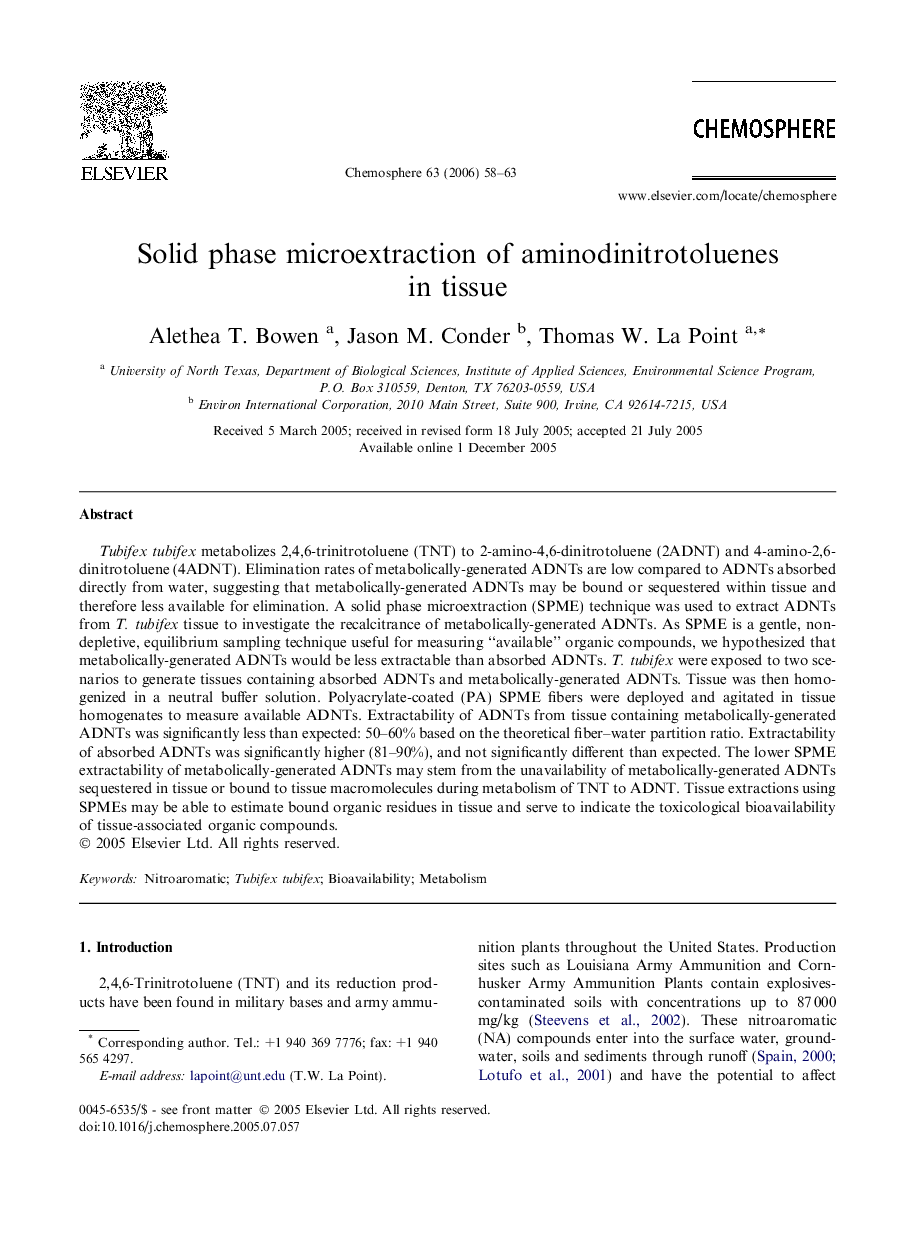| Article ID | Journal | Published Year | Pages | File Type |
|---|---|---|---|---|
| 4416898 | Chemosphere | 2006 | 6 Pages |
Tubifex tubifex metabolizes 2,4,6-trinitrotoluene (TNT) to 2-amino-4,6-dinitrotoluene (2ADNT) and 4-amino-2,6-dinitrotoluene (4ADNT). Elimination rates of metabolically-generated ADNTs are low compared to ADNTs absorbed directly from water, suggesting that metabolically-generated ADNTs may be bound or sequestered within tissue and therefore less available for elimination. A solid phase microextraction (SPME) technique was used to extract ADNTs from T. tubifex tissue to investigate the recalcitrance of metabolically-generated ADNTs. As SPME is a gentle, non-depletive, equilibrium sampling technique useful for measuring “available” organic compounds, we hypothesized that metabolically-generated ADNTs would be less extractable than absorbed ADNTs. T. tubifex were exposed to two scenarios to generate tissues containing absorbed ADNTs and metabolically-generated ADNTs. Tissue was then homogenized in a neutral buffer solution. Polyacrylate-coated (PA) SPME fibers were deployed and agitated in tissue homogenates to measure available ADNTs. Extractability of ADNTs from tissue containing metabolically-generated ADNTs was significantly less than expected: 50–60% based on the theoretical fiber–water partition ratio. Extractability of absorbed ADNTs was significantly higher (81–90%), and not significantly different than expected. The lower SPME extractability of metabolically-generated ADNTs may stem from the unavailability of metabolically-generated ADNTs sequestered in tissue or bound to tissue macromolecules during metabolism of TNT to ADNT. Tissue extractions using SPMEs may be able to estimate bound organic residues in tissue and serve to indicate the toxicological bioavailability of tissue-associated organic compounds.
